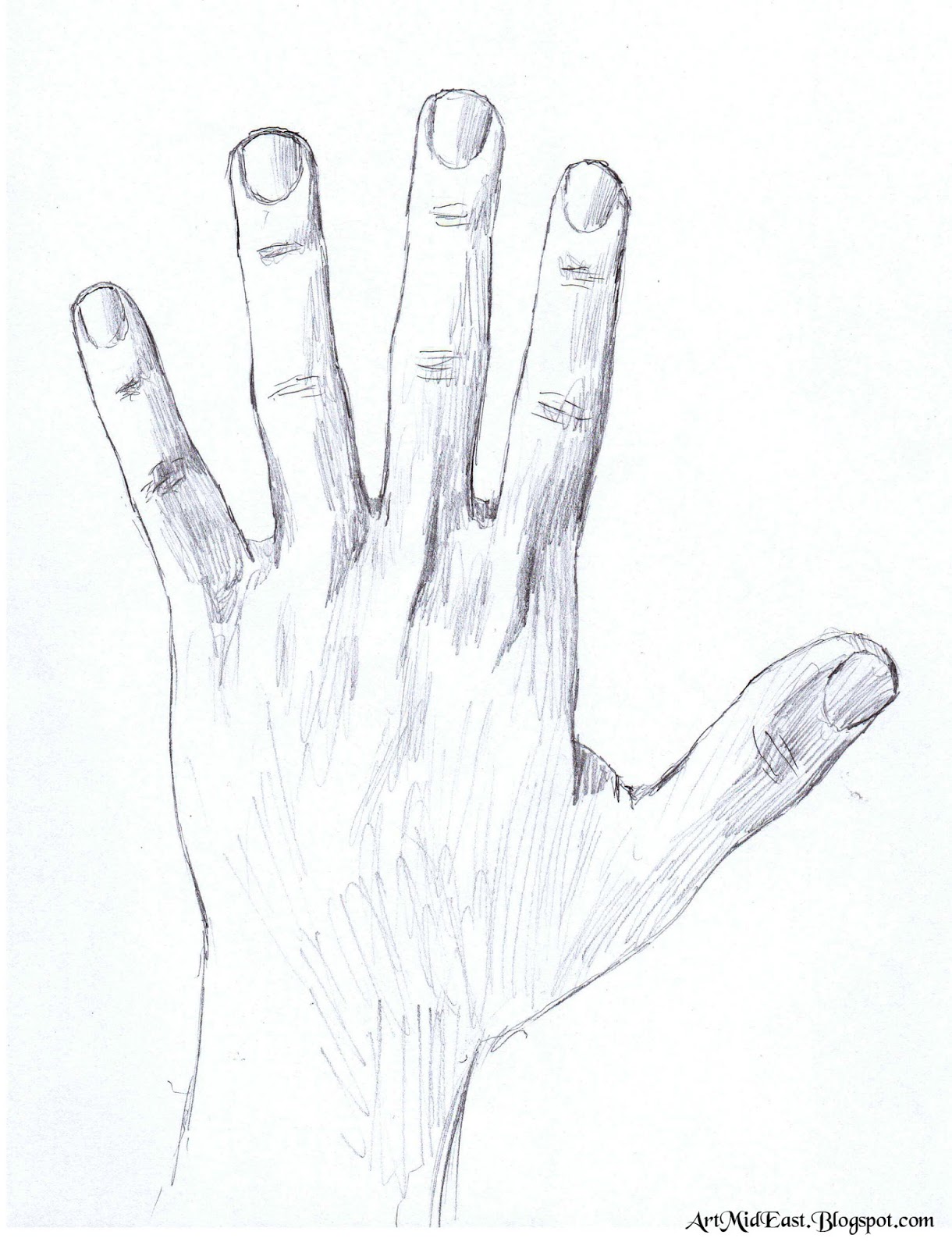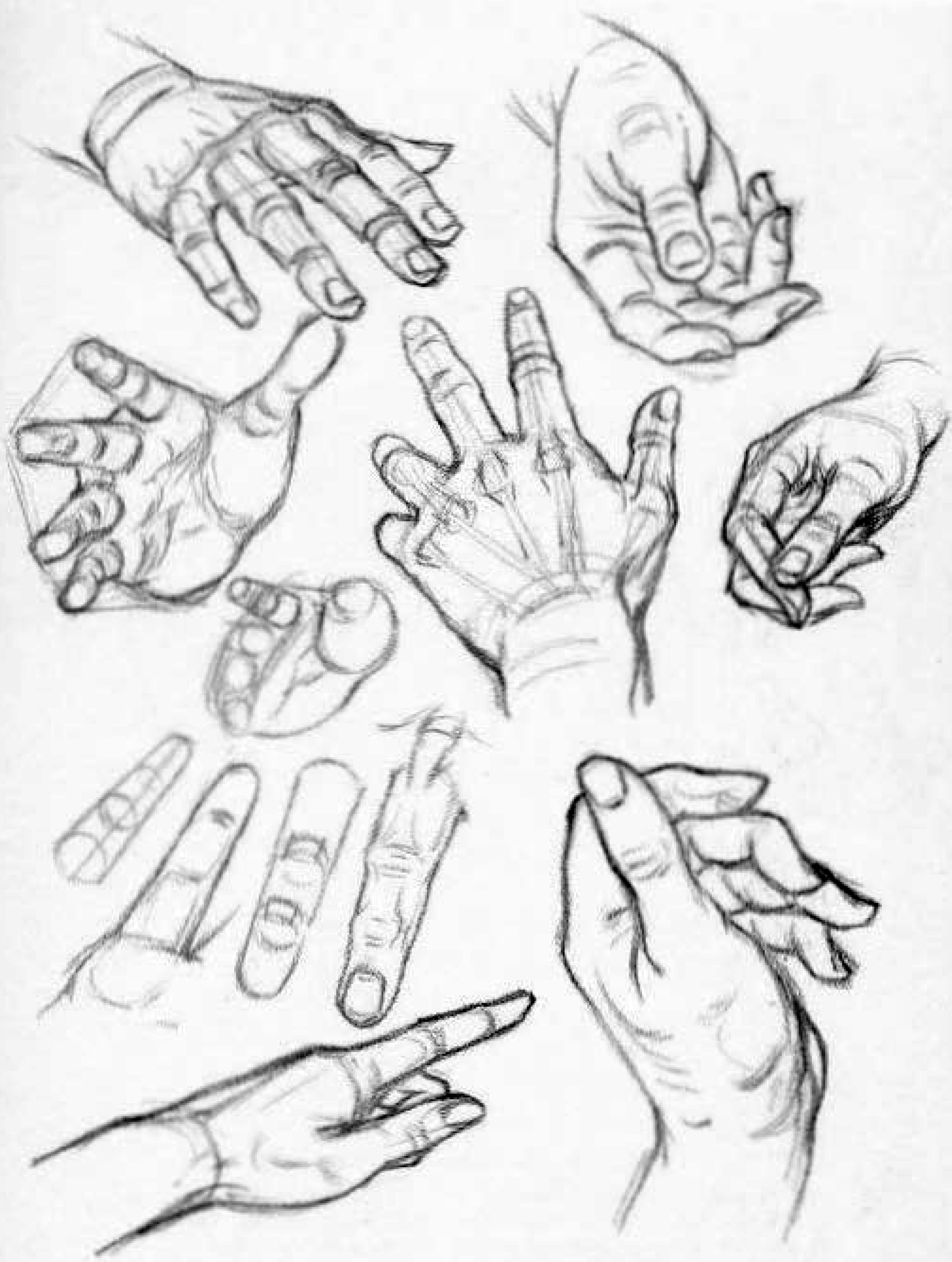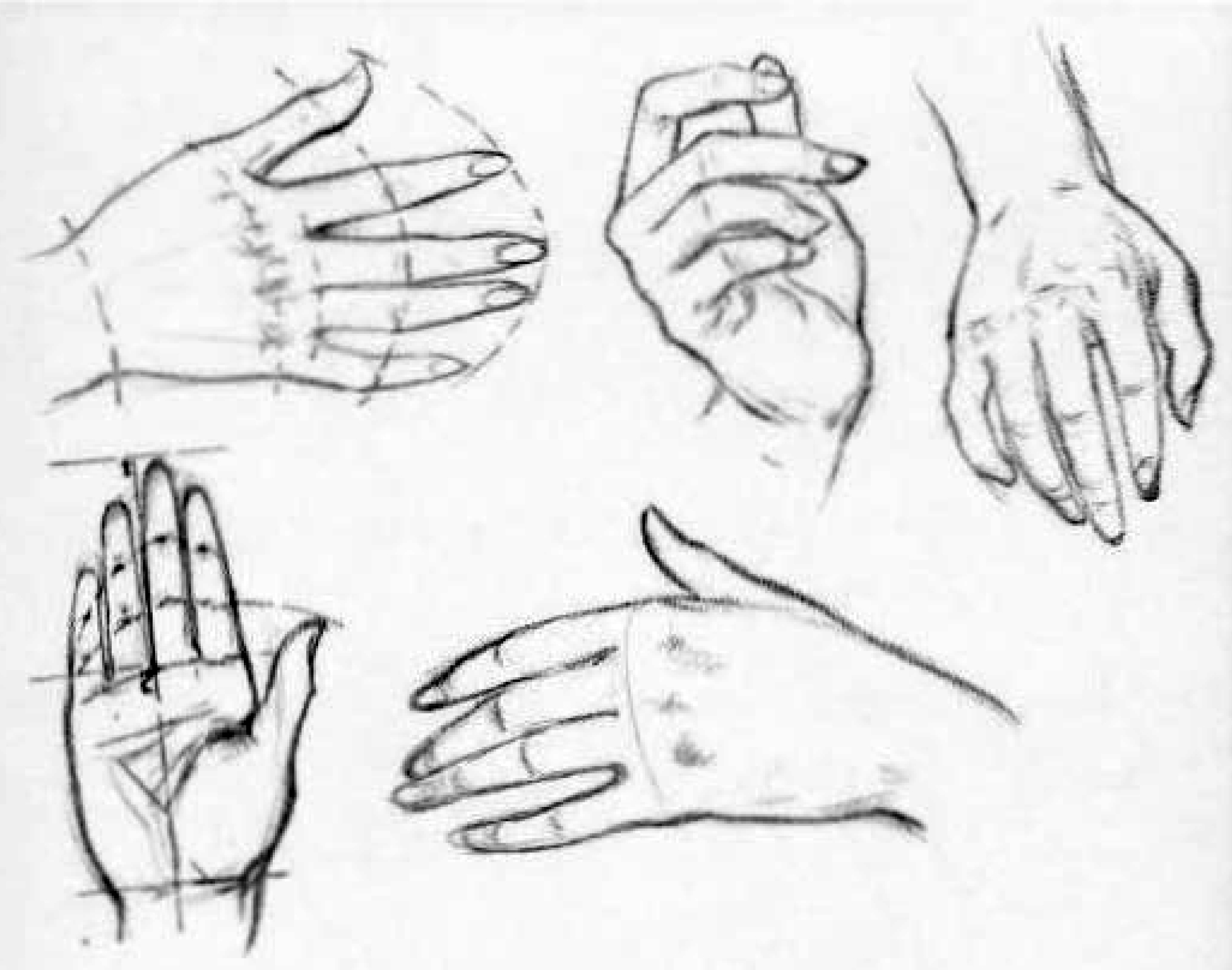Mastering Hand Drawing - A Creative Guide
Have you ever felt a little stuck when trying to put hands onto your characters or figures? It is, you know, a pretty common feeling among artists, whether you're just starting out with your creative pursuits or have been sketching for a while. Hands are incredibly expressive parts of the human form, capable of showing so much feeling and telling quite a story without a single word. They can add a whole lot of personality and emotion to any picture, so getting them right really does make a big difference in how your art comes across.
There's a good reason why so many people find drawing hands to be a bit of a puzzle. They're quite detailed, with all those little bones and joints, and the way they move can seem a little complicated at first glance. Getting the size and shape just right, or even the way they're posed, can sometimes throw off an entire drawing. But, really, there's no need for that feeling of being overwhelmed. With a thoughtful approach and some helpful pointers, you can absolutely get comfortable with depicting hands in your own unique way.
This guide is here to walk you through some straightforward ways to approach drawing hands, helping you build up your confidence and create more believable pictures. We'll look at some simple steps, offer some ideas for practice, and give you some things to think about as you sketch. So, too it's almost, if you're ready to make friends with drawing hands, keep reading; you'll find some helpful tips that can change your artistic flow for the better.
Table of Contents
- Why Hand Drawing Feels Tricky?
- Getting Started with Hand Drawing Basics
- What Makes a Hand Drawing Look Real?
- Exploring Hand Drawing Proportions
- Can Anyone Get Better at Hand Drawing?
- Practice Ideas for Your Hand Drawing
- How Does Light Affect Hand Drawing?
- Adding Depth to Your Hand Drawing
Why Hand Drawing Feels Tricky?
Lots of folks, you know, find that sketching hands presents a particular sort of challenge. It's often said that the hand is one of the more difficult parts of the body to put down on paper, and there's a reason for that. They are, quite frankly, quite intricate and full of little bits and pieces. If you get an angle just a little bit off, or if a bone structure isn't quite right, the whole picture of the hand can end up looking a bit odd or out of place. This can make a person feel a little frustrated, or even make them want to skip drawing hands altogether in their art, which is a shame, really.
The good news is that while it might seem a bit tough at first, it isn't, actually, too complicated once you get a handle on some basic ideas. The trick, you see, is to approach the drawing process in a thoughtful way. You can, in fact, use many of the same tools and ways of working that you already use for sketching other parts of the human figure. It's not like you need a completely new set of skills just for hands; it's more about adapting what you already know. So, really, don't let the initial feeling of difficulty stop you from trying.
Getting Started with Hand Drawing Basics
To begin your hand drawing adventure, you might want to start with some very simple shapes. You can, for instance, lightly sketch a rounded square as a base for the palm area. Then, you could add a triangle shape where the thumb will connect to the hand. After that, you'd put down a sort of wireframe, just very light lines, for where the fingers will go. This initial structure helps you get the general placement and size right before you add too much detail. It's a way to build a good foundation, sort of like putting up the frame of a house before you add the walls.
Next, you would, you know, sketch out little rectangles for each segment of the fingers. Hands have these distinct sections, and putting in these basic block shapes helps you keep the proportions correct. Then, for the joints, you can draw small circles or spheres. These round shapes help you see where the fingers will bend and move. This basic building block method helps you keep things in proportion and makes sure your hand drawing looks pretty natural. It's a bit like playing with building blocks, really, putting simple shapes together to make something more complex.
Learning about the basic makeup of the hand, like where the bones and muscles generally are, can help a lot too. You don't need to be a doctor, but knowing the main parts helps you understand how the hand moves and rests. This kind of basic information can help you create hands that look like they could actually be part of a real person. It's about seeing the simple forms that make up the hand, and then building on those. So, basically, it’s about getting a general sense of the hand’s structure before you get too caught up in the tiny bits.
What Makes a Hand Drawing Look Real?
Making a hand drawing look convincing often comes down to a few key things. One of the biggest is getting the proportions right, you know, how big each part is in relation to the others. If a finger is too long or too short compared to the palm, it can make the whole hand look a little strange. Another important part is understanding how the hand moves. Hands can take on so many different positions, and capturing that sense of motion or a natural resting pose is quite important for realism. It's not just about drawing a static object, but something that feels alive.
To really get a hand drawing to feel believable, you might also want to think about whether you want it to look like a real hand or more like a cartoon hand. The way you approach it changes depending on your goal. For something very true to life, you'd pay close attention to all the little details of how skin folds, where bones show, and how light falls on the surfaces. For a cartoon, you might simplify those things, but still keep the core shapes and movements that make it recognizable as a hand. So, it's about making choices that fit the style you're going for.
Exploring Hand Drawing Proportions
When you're working on hand drawing, a big part of getting things right is paying attention to how big each part is compared to the others. This is often called "proportions." There are some general guidelines for how long fingers should be in relation to the palm, or how wide the hand is at different points. Following these general guidelines can really help your hand drawing look natural and not awkward. It's like learning a secret code that helps you build a hand that just feels right.
You can find out how to draw hands from all sorts of different viewpoints, with various sizes, and even for people of different ages. This means looking at how a child's hand might differ from an adult's, or how an older person's hand might show more character. There are plenty of examples and diagrams that can show you these differences, which is pretty helpful. These visual aids can give you a clear idea of what to aim for. So, you know, it’s about seeing the variety that exists and trying to capture that in your own pictures.
Sometimes, what helps a lot is to study from the sketchbooks of other artists. You can see how they approach their hand studies and what kinds of things they focus on when they are learning to draw hands. This can give you some really good ideas and inspiration for your own work. There are, for instance, a huge number of hand drawings available for you to look at, which can spark your own creative thoughts and give you things to practice. It’s like getting a peek into how other people figure things out, which is always a bit interesting.
Can Anyone Get Better at Hand Drawing?
Absolutely, anyone can get better at hand drawing. It's a skill that builds up over time with practice and a willingness to try different things. It's not, you know, some kind of magic trick, but more about understanding a few key ideas and then putting them into action repeatedly. Many people feel a bit intimidated by hands because they seem so intricate and detailed. They worry about getting the proportions wrong or the poses looking stiff, which can, quite honestly, mess up a whole figure drawing. But the good news is that with some dedicated effort, you can overcome these worries.
Hands, as a matter of fact, add so much feeling to a drawing. They can tell you a lot about the person you're drawing or the general feeling you want to show. Because of this, it's really worth taking the time to get comfortable with the art of hand drawing. It's an investment in your artistic abilities that pays off in how expressive and lively your pictures become. So, if you're not happy with the hands on your characters right now, just know that there are ways to improve, and this guide is here to help you with that.
Practice Ideas for Your Hand Drawing
A good way to start practicing your hand drawing is by sketching the skeletal structure of the hand. This helps you understand the underlying framework, which is pretty useful. Or, you could just try drawing a simple open hand to get a feel for the basic shapes. Below are some drawings of hands that you could try sketching yourself, just to get started. These practice drawings are a simple way to get your hand moving and your eye seeing the shapes. It’s a bit like learning the alphabet before you write a story, you know.
There isn't, in some respects, a single shortcut that works for every single angle and position of the hand. Learning how to draw hands is a skill that takes a bit of time and effort. So, the step-by-step tutorials and tips we're talking about here can really only help guide you towards overall success in your hand drawing. They give you a path, but you still need to walk it. You might also want to think about trying out some drawing challenges. These can be a fun way to push yourself and see what you can do. For example, you could try drawing hands in different poses each day for a week.
For artists who want to get really good at showing hands holding various items, having visual support is incredibly helpful. Holding objects hand drawing references can provide you with invaluable pictures to study. You can see how the fingers wrap around different shapes, how the pressure changes the look of the skin, and how the hand adapts to hold things. This kind of observation is, you know, pretty important for making your hand drawings feel real and natural in a scene. It's about seeing how hands interact with the world around them.
How Does Light Affect Hand Drawing?
When you're working on your hand drawing, thinking about light and shadow is really important for making things look three-dimensional. Light hitting a hand creates brighter spots and darker areas, and these contrasts help give the hand shape and depth. Without careful attention to light and shadow, a hand drawing can look a bit flat on the page. It's like the difference between a simple outline and a fully formed object. The way light plays across the surfaces of the hand really brings it to life, you know.
This is where shading comes into play. You can learn how to draw and shade a hand by following detailed pictures that show you where to put your lighter and darker tones. These pictures often come with guidelines for figuring out the different proportions of the hand, like the fingers and thumb, which is quite helpful. The goal is to follow the steps from just sketching the basic shape to making smooth changes in tone for the shadows. This process helps your hand drawing go from a flat outline to something that feels like it has volume and form. It's about building up the sense of a real object.
Adding Depth to Your Hand Drawing
To make your hand drawing feel more like it has actual form and presence, you need to think about developing the shapes you've sketched. We can call this idea of seeing the hand in terms of its basic surfaces the "planar view." By drawing through your forms, meaning you sketch the lines that define the shape even where they'd be hidden from view, you can show the sense of something having a solid presence. You can see this, for instance, in the way the palm pads have a certain roundness or flatness, depending on the angle.
Breaking down the hand into these simpler, basic shapes is a really good way to approach this often challenging subject. Once you understand how light and shadow interact with these simple forms, artists can feel much more sure of themselves when they are sketching hands. It takes away some of that feeling of being overwhelmed by all the tiny details. It's about seeing the big picture first, and then adding the smaller bits. So, you know, it’s about making the complex seem a little less scary.
This tutorial, for example, explains how to draw and shade a hand by giving you detailed pictures along with ideas for estimating the various sizes of the hand, such as the fingers and thumb. These kinds of guides are really useful for making sure your hand drawing looks correct and has a good sense of depth. It's all about building up your skill set so you can create more confident and believable pictures. And, quite honestly, that's what we're all aiming for, isn't it? To make our art feel more real and expressive.
Whether you are just starting your artistic journey or you've been drawing for a while and want to improve, learning about hands is a great step. The process of learning how to draw a hand, step by step, can be quite rewarding. This kind of guide can help you understand how hands are built, from their basic shapes to how light affects them. It helps you see how to make hands look like they belong in the real world, whether you want them to be realistic or more like a cartoon. It's about giving you the tools to create hands that tell a story and add feeling to your pictures.

How to draw a hand - A step by step guide | Drawing Lessons

How to Draw Hands – Reference Sheets and Guides to Drawing Hands – How

How to Draw Hands – Reference Sheets and Guides to Drawing Hands – How